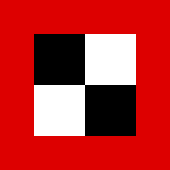3rd Army (German Empire)
The 3rd Army / Army High Command 3 (AOK 3) was a large unit and the associated command authority of the German Army during the First World War (1914-1918). It comprised several army or reserve corps as well as numerous special troops. At the beginning of the war, the troops of the army consisted mainly of contingents from the Saxon Army .
history
|
As on August 2, 1914 German Empire , the mobilization was made available from the eight were Army inspections made eight armies. From the II. Army inspection was created in Dresden the 3rd Army , which in the space Malmedy gathered. The commander-in-chief of Army High Command 3 was Colonel General Max von Hausen ; Chief of Staff became Major General Ernst von Hoeppner . In August 1914 the army consisted of the following units:
- XI. Army Corps
- XII. (I. Royal Saxon) Army Corps
- XIX. (II. Royal Saxon) Army Corps
- XII. (Royal Saxon) Reserve Corps
The 3rd Army, together with the 1st, 2nd, 4th and 5th Army, formed that part of the German western army that was to proceed according to the Schlieffen Plan for a comprehensive attack against the bulk of the French army. On August 18, 1914, as part of the general German advance, the army began the attack through Belgium . In heavy fighting, the 3rd Army crossed the Meuse near Dinant on August 23 and reached Rethel on September 1 . The army continued to advance on Châlons , taking Reims . The association then took part in the Battle of the Marne in the Vitry-en-Perthois area.
After the general withdrawal of the German armies to the Aisne , the 3rd Army was in Champagne , where the front froze in trench warfare. Their commander-in-chief, Colonel-General von Hausen, like almost the entire army staff, had already suffered from dysentery during the Battle of the Marne . On September 12, 1914 he was therefore released from his command and replaced by General of the Cavalry Karl von Eine . He held this post until the army was dissolved. In the following years, the 3rd Army was mostly in the defense of strong French counter-offensives. For example in the spring and September 1915 in the winter battle and the autumn battle in Champagne . In April / May 1917 during the Battle of the Aisne , in July / August 1918 in the Battle of the Marne and from October 1918 until the end of the war in the Meuse-Argonne Offensive . The headquarters of the Army High Command was initially in Bétheniville (September 12, 1914 - December 2, 1915), then in Vouziers (December 3, 1915 - January 15, 1917) and finally in Maison Rouge (January 16, 1917 - October 12, 1918) ). The army high command marched back to Wetzlar on November 30, 1918 .
References
→ Main article: Army (German Empire)
Web links
- The highest command posts in the army. on www.deutsche-kriegsgeschichte.de (as of April 16, 2010)
- The field-gray farmer. (Feldzeitung, published by Army High Command 3) LLB Detmold
literature
- Hermann Cron: History of the German Army in the World War 1914–1918. Siegismund, Berlin 1937 ( History of the Royal Prussian Army and the German Imperial Army 5).
